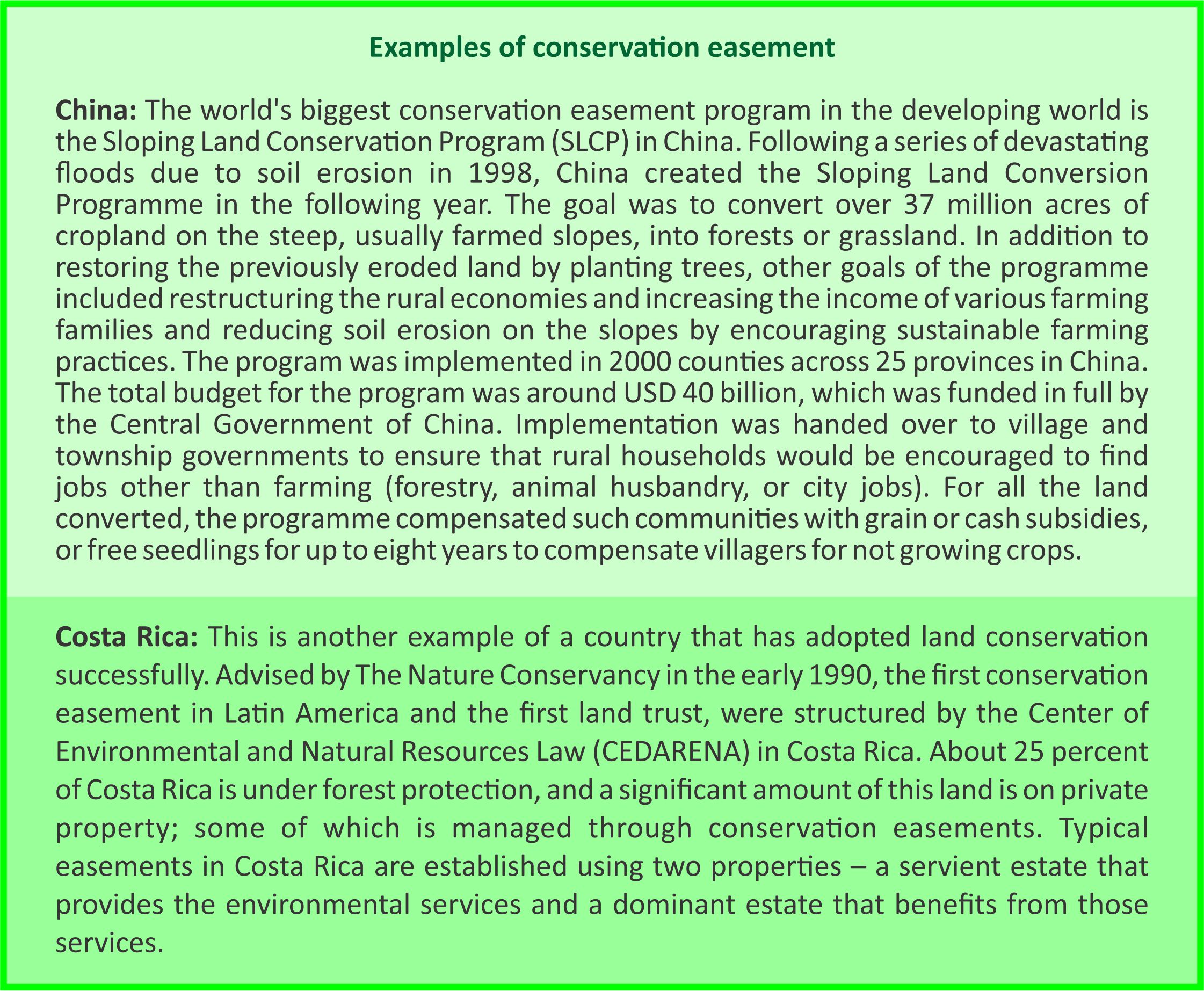Over the last few decades there has been growing recognition of the importance of nature and ecosystem services. This has spurred hundreds of efforts at local, national and global levels to protect and restore forest and other ecosystems. At the same time, because of the lack of price signals and comprehensive information in the standard economic markets, we tend to see an exploitation and destruction of nature. One solution to ensure that the value of nature is incorporated into decision making is to provide incentives and create policies that allow protection of valuable private and public lands.
Policy instruments that can be created
Regulation: when the government passes legislation and mandates the protection of specific land areas.
Uniform Payment Schemes: policies where landowners and farmers are paid to adopt a set of best management practices (BMPs) that help improve the biodiversity and ecosystem of selected land units.
Conservation Auctions: auctions similar to procurement auctions (or tender auctions). The government effectively calls for bids to purchase goods, in this particular case the goods are ecosystem services and biodiversity protection obtained from purchasing land.
Conservation Easements: voluntary agreements between landowners and conservation agencies and/or a local or national government. The land owner receives a direct payment or a tax break for leasing or giving up partial use rights of the land. The landowner typically still retains the ownership of the land and the option to end the easement at a future date.
REDD+ and conservation easements
Conservation easements provide incentives for landowners to be engaged in protecting land and preserving ecosystem services, and are often better received by land owners than mandates. The goal of REDD+ is to reduce deforestation and improve forest cover and thereby greater carbon sequestration. Within this context, implementing conservation easement as an integral part of REDD+ would require:
-
Identifying the level of carbon sequestration expected from implementing conservation easements.
-
Conducting
a conservation easement programme by selecting the most suitable land based on identified outcomes and approaching land owners to present the conservation easement or
conservation auctions where land owners submit bids, which are evaluated based on how well each submission meets REDD+ objectives or a combination of both.

Implementing conservation easement as part of REDD+
There are three main challenges that need to be overcome before conservation easements can become an effective part of implementing REDD+. As conservation easements are different from directly purchasing land, the creation of the necessary legal framework (policies and laws) is a hurdle that needs to be overcome at national level. A conservation auction may be easier to implement if a country has the legal structures to implement procurement auctions.
It is also necessary to ensure that the land placed under conservation is not developed and that only actions permitted by the agreement are conducted on the land. If the enforcement and monitoring costs are substantial, this may make conservation easement financially nonviable. Ensuring additionality and preventing leakage are complex challenges that need to be overcome.
Within this context, additionality refers to ensuring that conservation easements create additional benefits and do not pay for benefits that would have occurred even without its implementation. Leakage refers to how a conservation programme aimed at preventing deforestation may push the deforestation from the protected areas to an outside area, thus not resulting in a decrease in total deforestation (even though deforestation within the selected area has decreased).
Within this context, additionality refers to ensuring that conservation easements create additional benefits and do not pay for benefits that would have occurred even without its implementation. Leakage refers to how a conservation programme aimed at preventing deforestation may push the deforestation from the protected areas to an outside area, thus not resulting in a decrease in total deforestation (even though deforestation within the selected area has decreased).
Engaging the private sector and civil society
There are a growing number of private institutions and public utility companies that protect natural land for ecosystem services. For example, the water providers in Tualatin, Oregon, Portland, Maine, and parts of New York in the United States use conservation easements and direct purchases of land for conservation to protect the watersheds that provide drinking water to their customers and thereby reduce – or in some cases eliminate – the need for filtering. A similar model could be enacted in many countries, with public, private and civil-society organisations.
While there are challenges to creating and implementing these types of conservation programmes, there are also many inspiring stories from around the world of successful forest protection through conservation easement. Therefore, implementing conservation easement does not require inventing new methods; it is possible to take what has worked elsewhere and apply it to the context of each country. These and other policies need to be adopted to ensure that forests are protected for future generations.

The information and views set out in this guest blog post are those of the writer's and do not necessarily reflect the opinion of the UN-REDD Programme.



